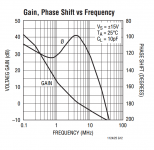No, I have the PDF, but I wanted the physical book...

Jan
Attachments
I like the way the tubes come out the body of the amplifier when you turn it on. I am a fan of electrostatics*, and finally got to use mine for the first time since December last night. very happy, and means I can finally check out the files Mark uploaded to see if I am deaf or good of hearing 🙂
*Stax were out of my price range at the time so I use the Koss ESP/950
*Stax were out of my price range at the time so I use the Koss ESP/950
Mooly, interesting. In the ear shells are integrated high voltage MOS-FETs as amplifiers so it may be assumed to be transformerless. .01 % distortion at 100 dB is claimed. Are there even microphones that precise?
.01 % distortion at 100 dB is claimed. Are there even microphones that precise?
No, I suspect these guys are smart enough to come up with some kind of argument via modeling or some such. B&K has a paper on using negative capacitance to reduce mic distortion, but the other side of that is a normal mic doesn't cut it. At that price once a day they could probably come up with something.
Are we to think 250 or so of these go out every year?
I like the way the tubes come out the body of the amplifier when you turn it on.
Really cool isn't it.
Mooly, interesting. In the ear shells are integrated high voltage MOS-FETs as amplifiers so it may be assumed to be transformerless. .01 % distortion at 100 dB is claimed. Are there even microphones that precise?
I have no idea on that. Maybe Scott is nearer the mark with the modelling theory.
No, I suspect these guys are smart enough to come up with some kind of argument via modeling or some such. B&K has a paper on using negative capacitance to reduce mic distortion, but the other side of that is a normal mic doesn't cut it. At that price once a day they could probably come up with something.
Are we to think 250 or so of these go out every year?
Yes, I wondered that to and did a quick calculation on how many millions they were raking in.
No, I suspect these guys are smart enough to come up with some kind of argument via modeling or some such. B&K has a paper on using negative capacitance to reduce mic distortion, but the other side of that is a normal mic doesn't cut it. At that price once a day they could probably come up with something.
Are we to think 250 or so of these go out every year?
This is an interesting question. I have been able to measure distortions that low in headphones without any special tricks using 50 year old technology. You can always make the cavity larger to reduce the level at the mike if that's a limitation.
I found the B&K preamps had pretty high THD which surprised me. The vintage HP preamps were much better.
I'll try to get a good measurement on a Stax for comparison.
This is an interesting question. I have been able to measure distortions that low in headphones without any special tricks using 50 year old technology. You can always make the cavity larger to reduce the level at the mike if that's a limitation.
I found the B&K preamps had pretty high THD which surprised me. The vintage HP preamps were much better.
I'll try to get a good measurement on a Stax for comparison.
True, I took it at face value 100dB at the mic. Though really, you've seen headphones at -80dB and 100dB spl?
I'll try to get some plots together. Low frequencies are a problem more often. Many headphones have big compression problems above 90 dB below 300 Hz.The diaphragms act more like balloons than stiff membranes.True, I took it at face value 100dB at the mic. Though really, you've seen headphones at -80dB and 100dB spl?
Sent from my LG-H811 using Tapatalk
I'm glad to see progress in the electrostatic headphone front. I personally still use my STAX Lambda Sig. direct drive tube headphone set-up, a world standard, perhaps 20 years ago. Progress takes time and money, and there is little chance to sell a lot of an expensive product, so the overall profits are usually made in the lower cost stuff.
Still, to progress, you must research and refine, and later what you learn can dribble down to the 'affordable' products.
Demian, what B&K mike preamp did you test with? The 2619? (I think that is the number, you know the one with the 1/2" mikes and 140V supply? I thought they were very well executed for a mike preamp.
On another note, I spoke at length to Walt Jung yesterday, especially about the old days and a paper of his that was suppressed by Lipshitz et al for the AES Journal. Heck, I was talking independently about Matti's PIM paper, but he apparently was not alone in the suppression of new ideas, or even good design engineering. Yes, Scott there was a problem, and not just with the peer review. It was political. Should peer review be political? I don't think so.
Still, to progress, you must research and refine, and later what you learn can dribble down to the 'affordable' products.
Demian, what B&K mike preamp did you test with? The 2619? (I think that is the number, you know the one with the 1/2" mikes and 140V supply? I thought they were very well executed for a mike preamp.
On another note, I spoke at length to Walt Jung yesterday, especially about the old days and a paper of his that was suppressed by Lipshitz et al for the AES Journal. Heck, I was talking independently about Matti's PIM paper, but he apparently was not alone in the suppression of new ideas, or even good design engineering. Yes, Scott there was a problem, and not just with the peer review. It was political. Should peer review be political? I don't think so.
If it involves a collective of humans, it becomes political to some degree (better behaving organization less so). Yes, peer review shouldn't be, but one *must* accept that it is and press on in pursuit of the truth nonetheless. Egos are regularly abused by the process. And this altercation precedes my birth, so if the knowledge has been covered since, then perhaps time to bury this hatchet?
Edit -- not to normalize political review boards, as that would be to move backwards in scientific progress...
Edit -- not to normalize political review boards, as that would be to move backwards in scientific progress...
Last edited:
Yes, Scott there was a problem, and not just with the peer review. It was political. Should peer review be political? I don't think so.
I'll remind you that when I gave my AD797 paper Mr. SL left the room as fast as possible. I approached him just to shake hands and he walked by me without even making eye contact. I call this more a personality cult than politics.
Last edited:
I'll try to get some plots together. Low frequencies are a problem more often. Many headphones have big compression problems above 90 dB below 300 Hz.The diaphragms act more like balloons than stiff membranes.
Sent from my LG-H811 using Tapatalk
When I was based in Tokyo, the lab had a lot of nice audio gear that in its heyday (late 80's to about 2002) was used to subjectively evaluate the CD performsnce.
During the late 70's and to the mid 80's Philips had worked closely with Sony to bring CD to market, but once the technology was developed of course, we were frenemies to put it mildly.
I was able to take the Stax headphone and associated tube amp home for about 6 months. The mid and top end were outstanding IMV but I was not impressed with the bass - I found it distinctly 'floppy' compared to the other 'phones I was using. However, great for classical stuff.
About a year before I left to go to Taiwan, they scrapped off a lot of gear. I was too late to catch the Stax phones or the full AP system (which had been replaced by a SYS 272). I did get a very nice 4 channel 200 MHz scope though - which got destroyed in shipping back to the UK (a bit like your firestorm experience John!).
Well I am enjoying my Koss this evening and whilst listening to some Pachelbel thought I ought to check your assertion on the bass, but not quite sure where to start other than some Evelyn Glennie CDs I have. I can see why plastic pop music might not sound right, but to me that is more about the accuracy of the headphones*. I need add a second output to the preamp so I can try Dafos through them.
* Note I have never been a 'basshead' so what do I know anyway 🙂
* Note I have never been a 'basshead' so what do I know anyway 🙂
I'll try to get some plots together. Low frequencies are a problem more often. Many headphones have big compression problems above 90 dB below 300 Hz.The diaphragms act more like balloons than stiff membranes.
Sent from my LG-H811 using Tapatalk
Sounds like you are doing your own measurements but I also came
to similar conclusions about many high priced phones. Here are the
HD650s, note the significant bass roll-off and large rise in distortion below
100Hz - no better than a bookshelf speaker: http://www.innerfidelity.com/images/SennheiserHD650.pdf
I stumbled onto these low cost Koss SP330s, remarkable bass extension
with LOW distortion, like having a subwoofer:
http://www.innerfidelity.com/images/KossSP330.pdf
Consider the increase in distortion with the HD650s if they were EQed for
the same bass extension as the Koss.
I don't like HD650s.
Last edited:
I'm glad to see progress in the electrostatic headphone front. I personally still use my STAX Lambda Sig. direct drive tube headphone set-up, .......
John,
Have you ever considered a HV-Blowtorch for electrostatic headphones, with say +/- 400V rails ?
Patrick
Interesting discussion last few pages.
I also note strenuous efforts to keep ego's under control - a great step forward!
Seems Scott's sig line finally has some effect 😉
Looking forward to more interesting content!
Jan
PS I just posted the Octave/Matlab m-files for the Vanderkooy & Mann Electro-acoustical measurement system here: https://linearaudio.net/downloads
I also note strenuous efforts to keep ego's under control - a great step forward!
Seems Scott's sig line finally has some effect 😉
Looking forward to more interesting content!
Jan
PS I just posted the Octave/Matlab m-files for the Vanderkooy & Mann Electro-acoustical measurement system here: https://linearaudio.net/downloads
Interesting discussion last few pages.
I also note strenuous efforts to keep ego's under control - a great step forward!
Seems Scott's sig line finally has some effect 😉
[/url]
No. what does it say?
Where is the denon 103 effect tip mass?
-RM
Last edited:
- Status
- Not open for further replies.
- Home
- Member Areas
- The Lounge
- John Curl's Blowtorch preamplifier part II


